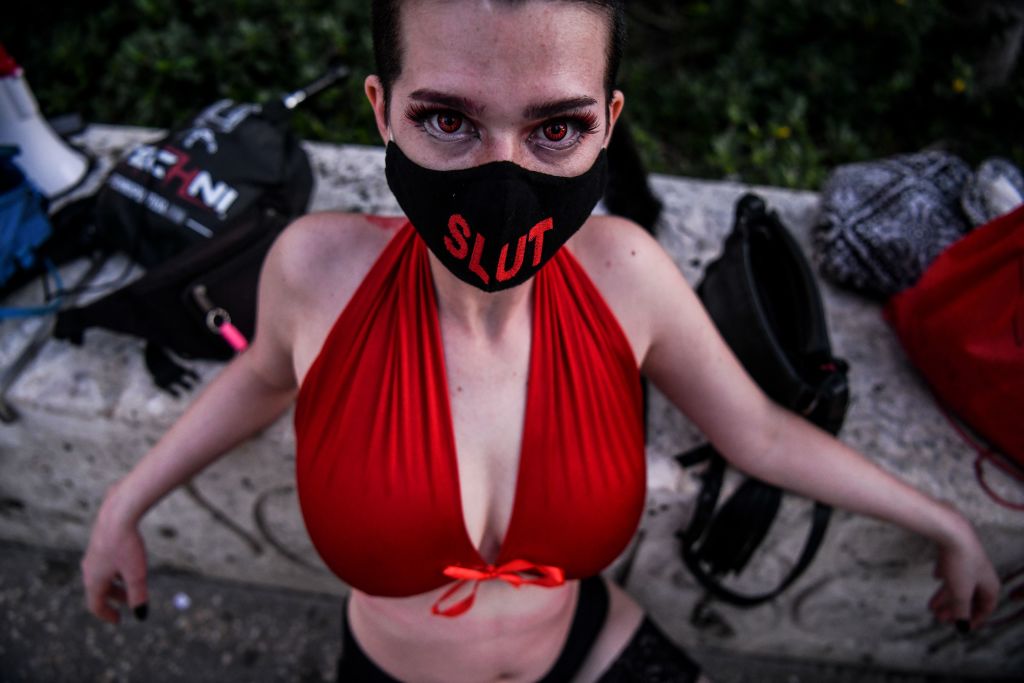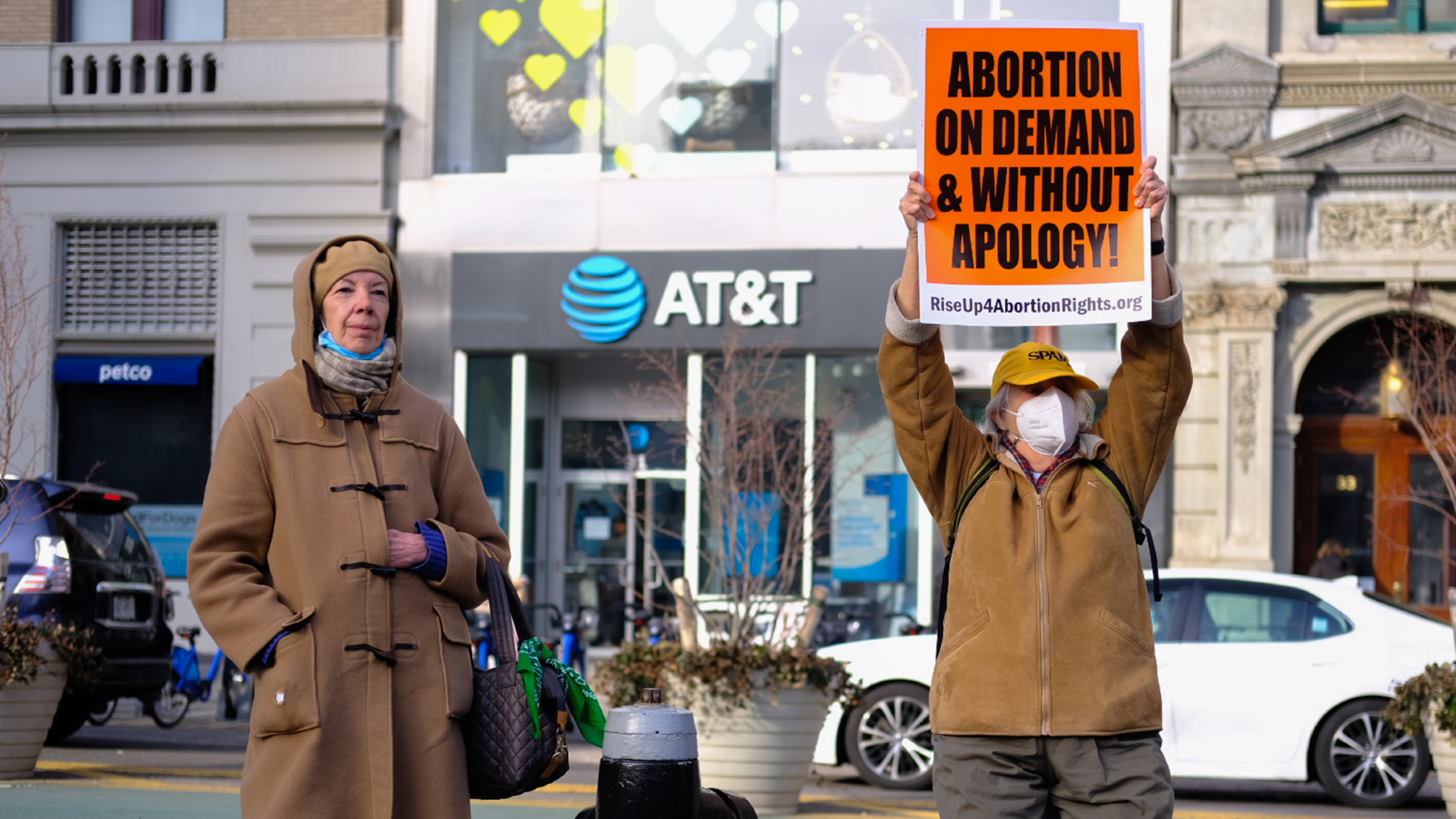Conservatives and feminists must unite against technocratic effacement.
Women Are Queer

Gender theory reduces women to the status of defective men.
It’s important to reflect each year on the meaning of the high holy days. So since it’s April, let’s take a moment and consider the significance of a major annual ritual that took place this month. I’m talking, of course, about International Asexuality Day.
April 6 is set aside in the LGBTQIA+ calendar for recognition of asexuals and demisexuals. The former are those who experience little to no sexual attraction. The latter are those who feel sexual attraction only under certain conditions—especially if those conditions involve emotional intimacy.
Asexuality and demisexuality exist on the proverbial “spectrum,” implying as usual a potentially limitless (and limitlessly tedious) array of microvariants. But in general, demisexuals describe themselves as feeling no sexual arousal until they form an emotional connection.
Asexuals, too, often have sex—but it interests them less than romantic love. According to a 2020 study from the journal Archives of Sexual Behavior, “asexuality is not synonymous with a lack of sexual attraction, sexual behavior, or intimate relationships.” About half of the asexuals surveyed have sex, and just over half of them (59%) are in an intimate romantic relationship—about the same percentage as lesbians and gays.
But the study’s most interesting conclusion is this: “an overwhelming majority of asexuals were assigned female at birth (86%).” In other words, the survey responses indicate that this is all basically a girl thing. Which makes sense because, the more descriptions you read of asexuality and demisexuality, the more they just kind of start to sound like a normal female sex drive.
To say this is to invite accusations of unconscionable sexism. A major proposition of current feminist thought is that women like sex just as much as men. In 2013, journalist Daniel Berger was hailed as a hero for defending this claim in What Do Women Want? The book received breathless reviews in Salon, Slate, the Cut, and the Atlantic, wherein Hugo Schwyzer asked: “are men ready to cope with the reality of heterosexual women’s horniness?” Dealing what they considered a staggering blow to the patriarchy, these observers declared that the thirst was indeed real.
But the existence and intensity of women’s sex drives are old news, and no one was really questioning them in 2013 to begin with. Our Bodies, Ourselves, the famous encyclopedia of female sexuality, came out more than 50 years ago. Even in antiquity, there was running gag that women wanted sex more than men (see for instance Aristophanes, Assemblywomen 214-40).
The real point at issue is not whether women get turned on, but whether they get turned on by different things. Which they obviously do. Studies and common sense alike indicate that emotion is a major ingredient in female desire. Men tend to feel passion for the body; women tend to care first for the soul. Like every general trend of human existence, this one comes with its pitfalls and its exceptions. But it is also exquisitely beautiful.
Ironically, by flattening out the difference between men’s and women’s loves and lusts, feminists end up measuring all sexual desire by the standard of the male libido. If you insist that women are no less inclined than men to sever physical from emotional intimacy, then you will end up with a whole lot of women whose desires feel nothing like what they have been taught to consider “average.” When those women discover that they do associate sexual arousal with romantic love, they will likely conclude that they are not only unlike men, but unlike most people of either sex.
And this is how you arrive at a “minority sexuality” that is really just a description of female desire. Asexuality and demisexuality are the result of describing the world as if “normal” means lusting the way men do. Inevitably, many women will conclude that they don’t lust enough to count as normal. So in effect, being a woman now makes you queer.
And queer, in turn, is an increasingly attractive thing to be—especially for girls. Young people in general are claiming various forms of sexual identity, but it is females who identify more often as trans, non-binary, or just generally “other.” This stands to reason, since “other” is exactly how queer theory itself defines women: as an unusual or simply meaningless type of person.
It is true enough that some men have caricatured women as wilting flowers, and that some men still do. But reports of misogyny on the modern Right are greatly exaggerated. The true traditional ideal of femininity is the Good Wife of Proverbs 31: the capable businesswoman and prudent housewife, the exalted matriarch and beloved helpmeet. Perhaps it is not Christians and conservatives, after all, who think of women merely as defective men.
The American Mind presents a range of perspectives. Views are writers’ own and do not necessarily represent those of The Claremont Institute.
The American Mind is a publication of the Claremont Institute, a non-profit 501(c)(3) organization, dedicated to restoring the principles of the American Founding to their rightful, preeminent authority in our national life. Interested in supporting our work? Gifts to the Claremont Institute are tax-deductible.
Liberal feminism relentlessly aggresses against the female body and soul.
The attack on femininity is destructive and drab. Do better.
Media culture sells girls’ bodies—and souls—for parts.
As the Left abandons the meaningful existence of gender, abortion remains a sacrament reserved for women in the woke cathedral.





